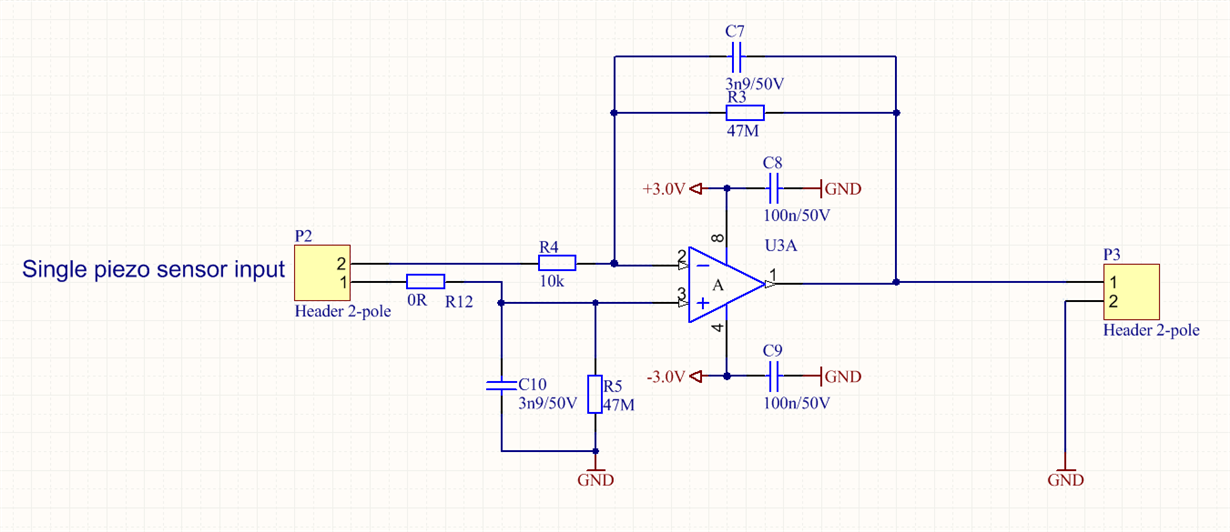Hello, I'm working with piezo film sensors and I'm using an OP amp to create a differential input charge amplifier. The OP map is supplied with both positive and negative voltage (V+ = 3.0V and V- = -3.0V) so the output swings both positive and negative around GND. I'm however not sure how to create a differential input charge OP amp under these conditions with the purpose to cancel out 50Hz common mode noise.
I have attached the schematic for the charge amplifier circuit I'm using today.
Have I connected it correctly to get differential inputs ? will this circuit cancel out any 50/60Hz common mode noise ?
Best regards
Ronny


